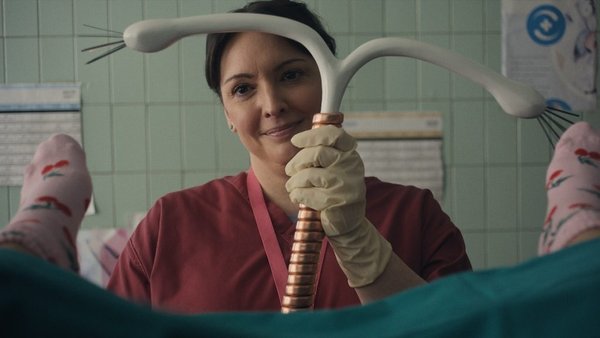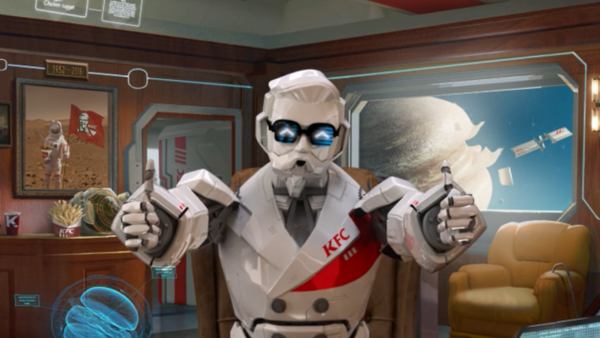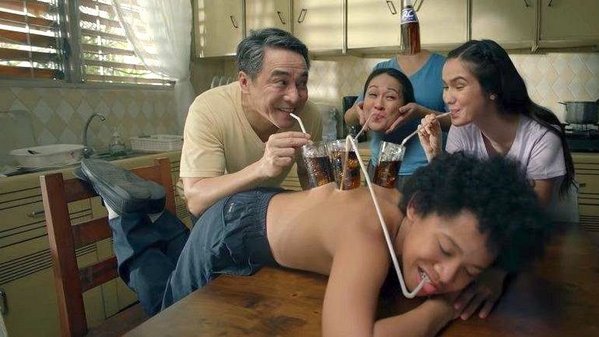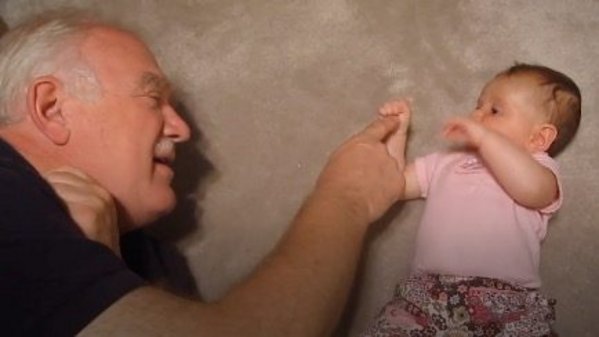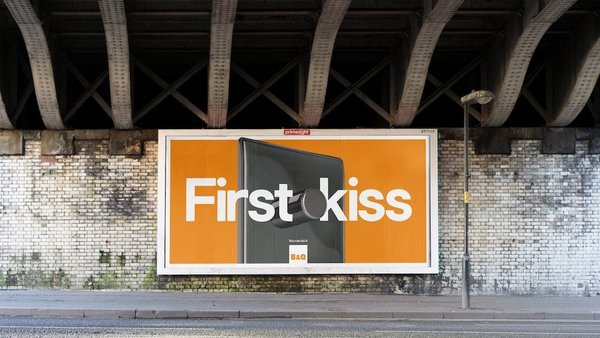Insight & strategy
From punchline to Grands Prix: how a health charity made herpes a headline and a hit /
How a charity used humour, education and Kiwi pride to break the stigma surrounding herpes – and won two Grands Prix at Cannes Lions
New Zealand Herpes Foundation (NZHF) picked up the Lions Health Grand Prix for Good and the Grand Prix for Good for its Make New Zealand the Best Place in the World to Have Herpes campaign. Created by Motion Sickness, Aotearoa, the work also grabbed Gold in the Health & Wellness category at the Cannes Lions International Festival of Creativity 2025.
The initiative was designed to break the stigma surrounding the virus. The behaviour-change campaign launched on Global Herpes Awareness Day (13 October 2024) with a series of humorous education videos featuring local celebrities, and a live leaderboard that maps the ‘Herpes Stigma Index’ of 10 countries.
According to the agency, in eight weeks, New Zealand rose from ninth to first place on the leaderboard after more than 10,776 hours (more than a year’s worth) of destigmatisation content were viewed. The campaign generated 100+ news stories and 22 million PR impressions.
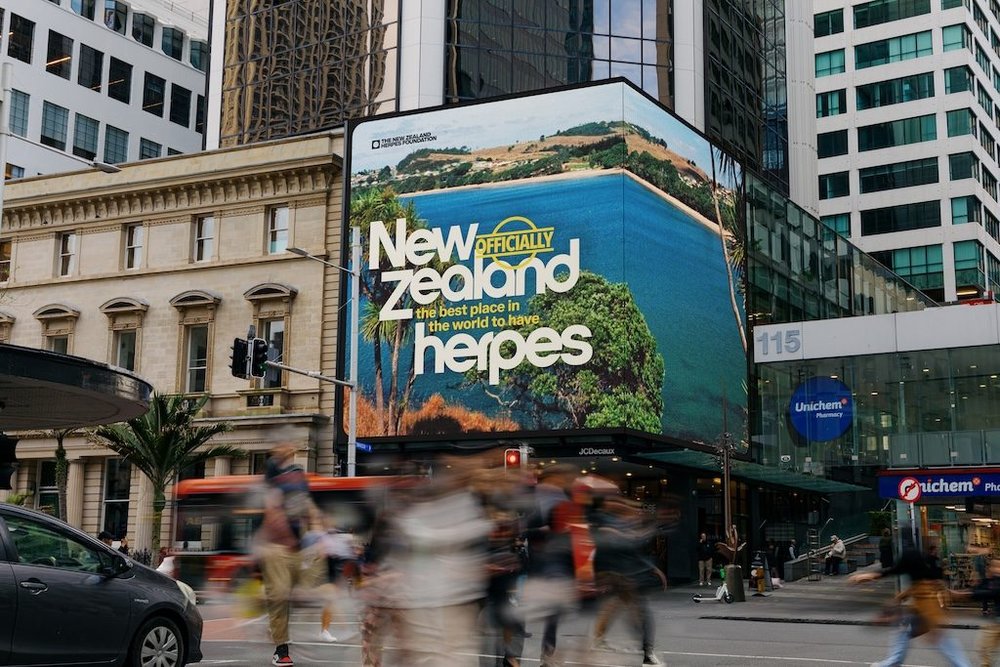
To find out how the team made New Zealand ‘the best place in the world to have herpes’, how they brought a disruptive approach to a long-term challenge, and what they did to change behaviour on a national scale on a limited budget, we spoke to Motion Sickness executive creative director and founder Sam Stuchbury. He told us:
- Flip the narrative / Reframing herpes destigmatisation as a matter of national pride made a challenging topic more engaging and shareable
- Leverage humour with purpose / Using humour as a Trojan horse helped break down taboos and spark conversation (the joke should always be about the stigma, not the people affected)
- Authenticity drives advocacy / Securing well-known ambassadors who could speak about the issue in their own unique way made the message more relatable and credible
- Behaviour change beats awareness / Measuring success through attitude shifts, not just reach, ensured the campaign created real, lasting impact rather than just sparking conversation
Tell us how this project came to be and what kind of campaigns the New Zealand Herpes Foundation has previously launched?
The New Zealand Herpes Foundation has been trying to break herpes stigma for over two decades, largely through traditional education, clinical support and awareness-building. While the information was smart, engagement often remained low and stigma stubbornly high.
Much of the foundation’s time was taken up helping people in the panic of a diagnosis – rather than breaking the stigma. [They] wanted something fresh and disruptive, they had seen some of Motion Sickness’ work for Fire & Emergency New Zealand and K-Road and felt we had the chops.
Sam Stuchbury, Motion Sickness
Did you receive a brief – what were the objectives?
We did and it was pretty good. When you boiled it down, the brief was clear: the mental stigma of herpes in New Zealand is far more damaging than the virus itself. ‘Please, break the stigma.’
The kicker? They’d been trying to do that for so long, they internally referred to the project as ‘the impossible brief’. NZHF even had to set up a phone line for people struggling with the stigma. They were totally open about that difficulty – it wouldn’t be easy. We actually responded with a completely different idea at first. Without giving an unapproved idea away, it was a kind of digital herpes simulation. We loved it. But after some lengthy discussion, the NZHF team felt the risk radar was a little too high. It was in the ballpark – but not a home run.
We licked our wounds, regrouped and came back with something new: Make New Zealand the Best Place in the World to Have Herpes. That was the home run. Everyone fell in love with it immediately. We didn’t have much money to make it – like, at all – but we knew it had so much potential.
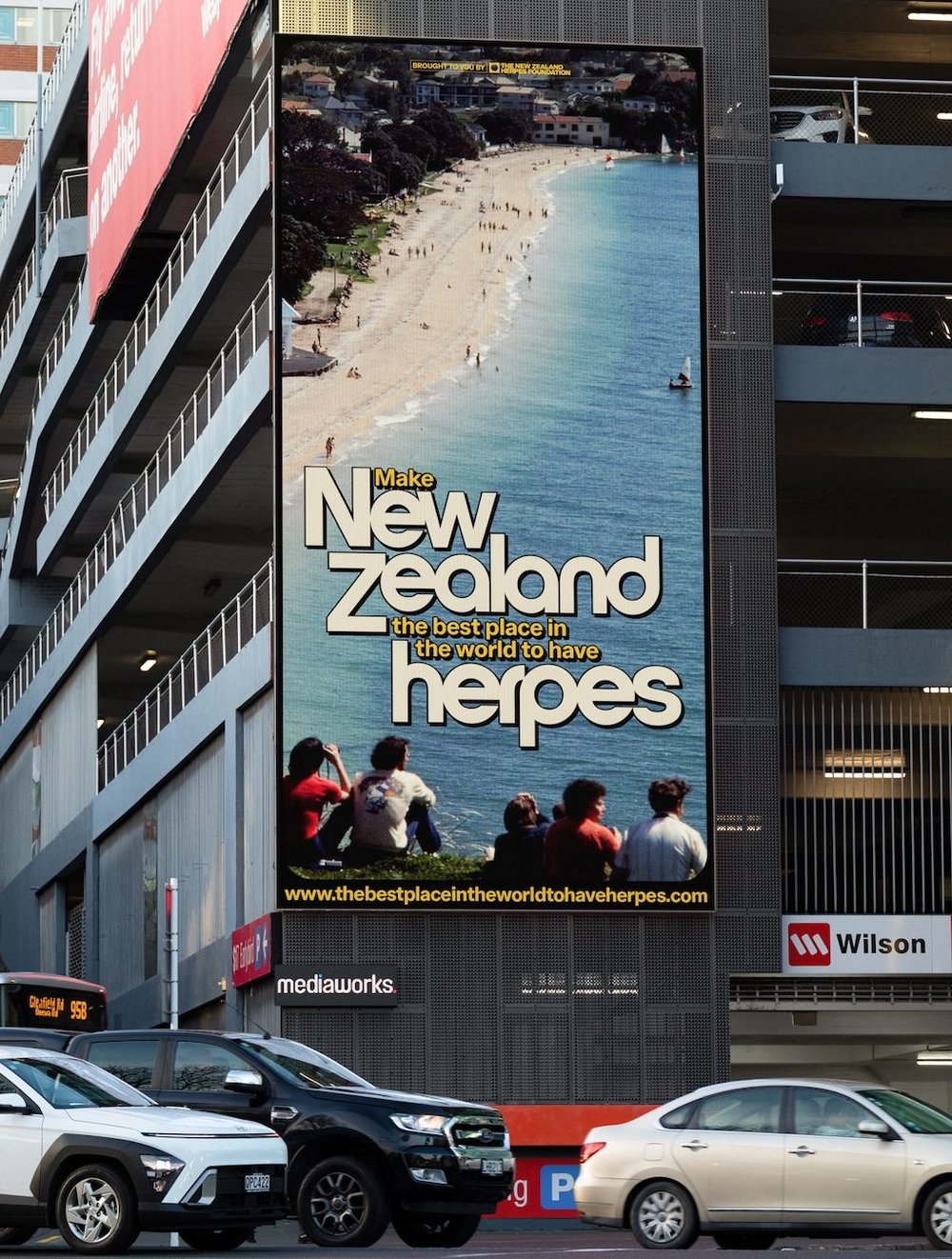
Sam Stuchbury, Motion Sickness
What insights drove your media choices, and which channels proved most effective?
We knew herpes stigma lived in the shadows – so our media strategy was built to drag it into the daylight. Because Herpes doesn’t have a specific target audience, our approach was to reach as many New Zealanders as possible and drive them to the online course. We layered this with more targeted activity – ads in doctors’ waiting rooms helped us reach medical professionals and those directly affected, while placements in universities tackled stigma where it often hits hardest.
With the majority of media secured through pro bono partnerships, we leaned heavily on the support of suppliers who genuinely believed in the cause. We were lucky to have strong backing from a wide range of partners – TikTok, Warner Bros. Discovery, Val Morgan, GoMedia, Phantom, NZME, just to name a few – unlocking high-impact placements across TV, cinema, OOH and digital. It gave us the reach of a big-budget campaign, without the big spend.
TikTok and Meta played a key role in stirring social conversation and extending global reach. Support poured in from across New Zealand – and beyond – with international influencers helping amplify the message and normalise the narrative.
Sam Stuchbury, Motion Sickness
The campaign brilliantly reframes herpes stigma as a matter of national pride. What was the strategic thinking behind this approach, and how did you ensure it would resonate with Kiwis?
At the time, New Zealand’s national pride was falling. The All Blacks weren’t winning. Our world-renowned prime minister, Jacinda Ardern, had resigned, and a chaotic coalition government was elected. We were in a recession, and a record number of Kiwis were emigrating to Australia. Things were feeling bleak. We had lost our enthusiasm for New Zealand and our sense of togetherness.
So we reframed herpes destigmatisation as an unlikely opportunity: a challenge that could restore a bit of Kiwi pride – becoming the best in the world at something again. Turning the taboo into the unexpected allowed us to disguise the seriousness of the issue behind humour, reclaiming herpes as something that could restore national pride.
Sam Stuchbury, Motion Sickness
Humour isn’t the obvious route in healthcare or stigma-focused campaigns – how did you strike the right balance between being irreverent and maintaining credibility on a sensitive topic?
We used humour as a Trojan horse – lowering defences, sparking curiosity, and making it easier to absorb real information. No one’s clicking on a serious herpes ad. And if it’s too serious, it’s not exactly making its way into pillow talk – it starts to sound like a setup for a confession.
We needed to give people a reason to talk about it – and a way to do it without all the awkwardness. For Kiwis, humour and uncomfortable situations go hand in hand, so it made sense. If we ever laughed at people with herpes, we’d failed. But if we laughed at how ridiculous the stigma was – creating space to actually take in the facts – we won.
The NZHF has been trying to crack this stigma for 20 years. What do you think made this campaign succeed where others had struggled?
It spoke about herpes in a way it never had before. Herpes wasn’t the butt of the joke – the stigma was. Lots of health campaigns focus on information. This one focused on the solution. We made it social, shareable, funny and deeply Kiwi. We trusted the nation was smart enough to get the joke, and strong enough to handle the truth.
How did you select the right ambassadors, and what role did they play in shaping the campaign’s tone and effectiveness?
Nobody has ever wanted to be in a herpes ad. But this campaign’s approach – turning herpes from a personal topic into a national priority – made it something Kiwi icons could finally agree to. It wasn’t about who does or doesn’t have herpes, it was about how to beat herpes stigma so we could beat the whole world.
We knew, given the stigma, that it would be shocking to have the most famous All Blacks rugby coach, a knight, or a Real Housewife talk about herpes publicly. But beyond the shock factor, we wanted people with distinctive personalities and skills – people who could comedically unpack aspects of herpes stigma in a way only they could. This let us keep the content feeling personal, while framing the fight against stigma as a collective effort.
How and why did you create a global leaderboard ranking stigma by country, and what impact did it have on engagement?
The leaderboard was designed to gamify destigmatisation and tap into Kiwis’ innate sense of competitiveness with the rest of the world. It gave people a tangible way to ‘compete’ for something good, and be a part of that social proof.
The other advantage is it also gave us a steady stream of content and commentary on the race to the top, fuelling the campaign week to week. The leaderboard gave Kiwis a reason to care, share and check back in. Outside New Zealand, 77 countries engaged with the destigmatisation course, despite messaging being heavily aimed at New Zealand audiences. Showing the competition did drag the world into the quest for number one.
Sam Stuchbury, Motion Sickness
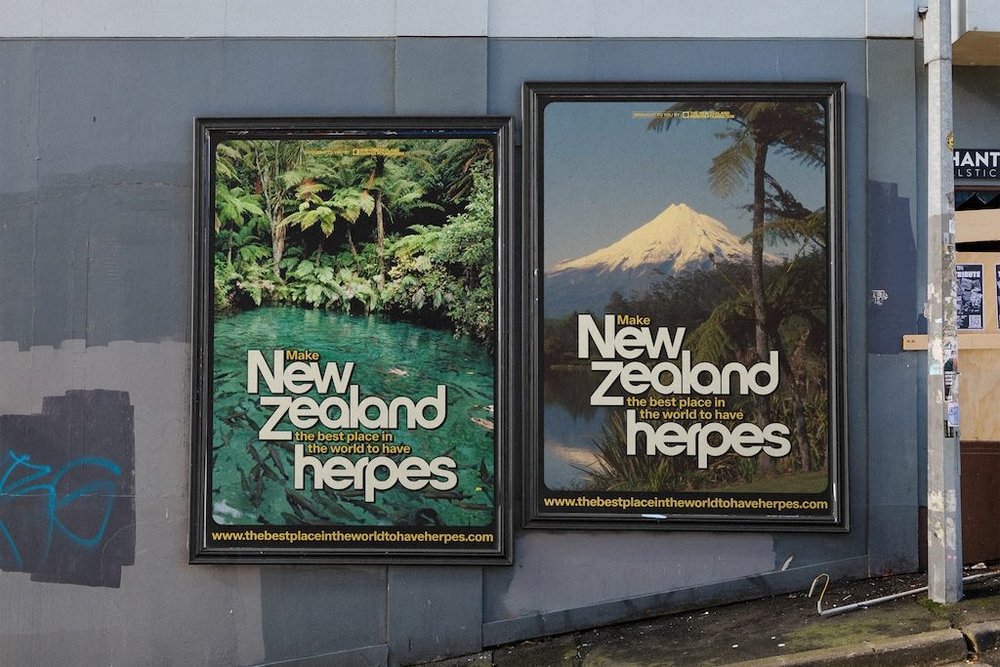
Beyond the leaderboard movement, what KPIs did you set to measure success? Were there any unexpected insights or data points that showed the campaign was working?
We partnered with TRA [The Research Agency] for the project, which allowed us to really dig into behaviour change. A key foundation for the campaign was stigma levels. TRA conducted a qualitative survey around the world and in New Zealand to measure people’s attitudes toward herpes. This gave us a benchmark for where New Zealand stood before the campaign. We repeated the survey afterward to validate the title.
Our main KPI was to begin breaking the entrenched stigma within New Zealand. Over eight weeks, New Zealanders rallied behind the campaign, pushing the country to number one on the leaderboard as The Best Place in the World to Have Herpes. More than 10,776 hours of destigmatisation content were viewed – over a year’s worth of herpes education. More than any other country. The campaign’s approach also sparked a national and international conversation that broke down the stigma, generating more than 100 news stories and 22 million PR impressions.
Our most impressive behaviour-change stat came from a randomised survey served to people who completed the course: over 86% of participants said they felt comfortable discussing herpes, and 76% said they now feel equipped and empowered to support someone else with a herpes diagnosis – many even called it life-changing.
The campaign not only reshaped public perception but also paved the way for long-term change, with plans to introduce the course into the New Zealand school curriculum – all on a creative budget of just NZ$80,000 [about $45,700]. As an agency, we went into the brief finding herpes funny and awkward. But by the end of the campaign, we were talking about it openly at work without batting an eyelid. That’s the power of the right conversation – and we hope that will be the lasting legacy of this campaign.
Want more of the same? /
We don’t just write about best-in-class campaigns, interviews and trends. Our Members also receive access to briefings, online training, webinars, live events and much more.
